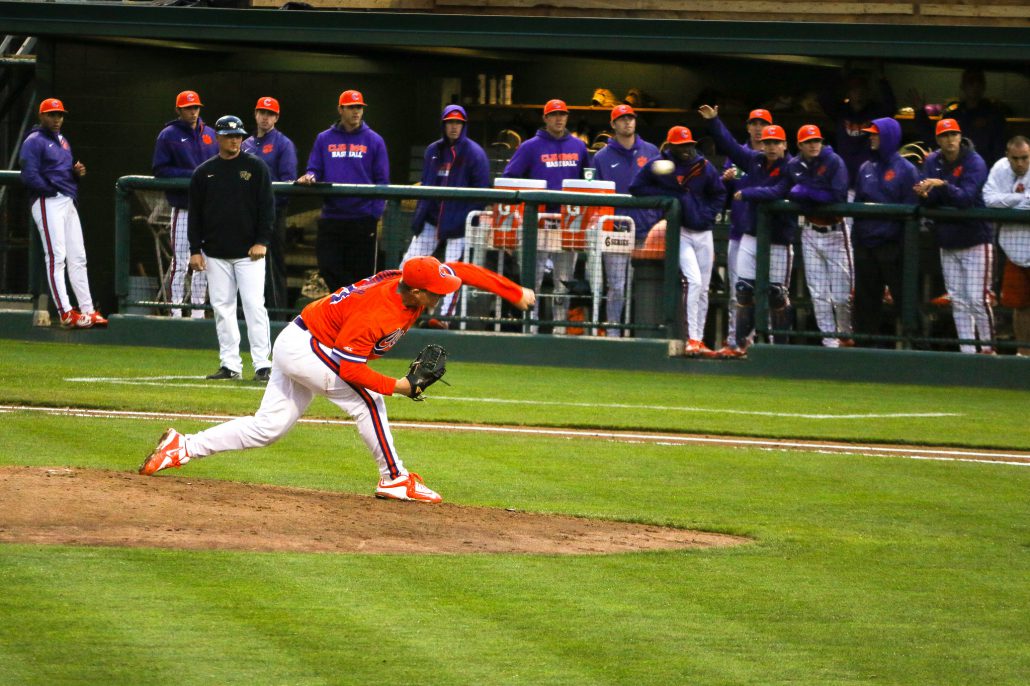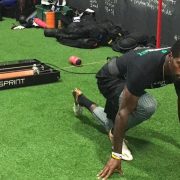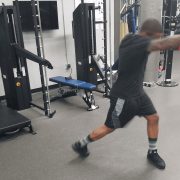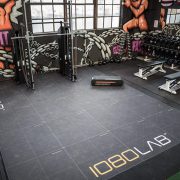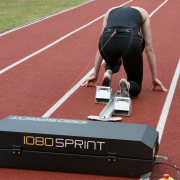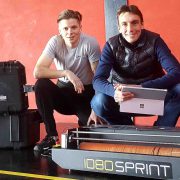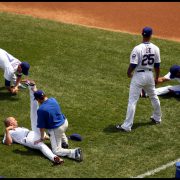Incoming baseball players at Clemson University may wonder for a moment if they showed up to the gym at the wrong time for their strength & conditioning sessions. Rick Franzblau opens the off-season training with resisted sprint load-velocity profiling, which points the way towards regular sprint training throughout the fall.
Sprint mechanics have an increasingly high priority for the team sports Franzblau trains. He is Clemson’s director of Olympic Strength & Conditioning, and also oversees baseball and men’s soccer. He has worked with Olympic sports and track & field throughout his time at Clemson, where he started as a volunteer intern and progressed through graduate assistant and assistant strength & conditioning coach before taking up his current post.
“Baseball players are very inefficient runners,” Franzblau says. “The acceleration patterns of incoming freshmen are all over the place. They have no idea of rhythm or hip projection. They just try to move their body as fast as they can.”
Franzblau draws on the work of J-B Morin and Chris Korfist in the design of his resisted and assisted sprint protocols, respectively. For load-velocity profiling, he tests players over 20 meters with the 1080 Sprint providing 3, 8, 13, 18 and 23 kilograms of resistance. Once he develops the load-velocity curve for each athlete he can segment the group’s training for those who need low speed / high force work, and those who need low loads at high speed. Heavy load training includes 15-20 meter accelerations, which help all players with technical aspects of sprinting, hip projection and force production.
Assisted sprinting shows up in a three-station circuit Franzblau devised. One station includes alternating hurdle hops to work on jump patterns, coordination and ground contact time. The second station uses variable assistance provided by the 1080 Sprint. Players start with 5 kilograms of assistance, which decreases to 1 kg over the course of a 25-30 meter run. The high initial assistance creates a slingshot effect that propels the players in the first few steps and allows them to finish with minimal pull.
The third station is assisted sprinting over wickets with a constant level of assistance. Players run 55 meters with 1 – 5 kg of assistance, resulting in speeds over 10.5 m/s.
“Our guys are lighting it up on flying-10’s, and we have improved our shorter acceleration runs.
“Research shows that guys who run faster from 60-100 meters have higher velocities at every interval within. Being faster at 40 and 50 meters means being faster at 20 and 30 meters, which matters to us as the distance from home plate to first base.”
Clemson’s soccer players will be the next to meet the 1080 Sprint for off-season work. They are currently in their post-season recovery, and will return to training with force-velocity profiling. Franzblau is weighing options for using the 1080 Sprint for change of direction training.
“We’re talking about basic movement patterns, such as side shuffling, back-pedalling and decelerating. They would be resisted going out, and assisted coming back. This is one more tool to focus on lower leg strength and eccentric capabilities. Another undervalued use is multi-directional hopping. Medial / lateral hops, for example, provide a lot of activation and build strength in the glute medius and adductors.”
Like anyone working with soccer players, hamstring injury prevention is a major concern. The 1080 Sprint will complement Franzblau’s use of force plates and the NordBord to monitor each player’s force per body weight, a consideration that Franzblau believes contributes to injury risk.
“We normalize the eccentric force data from the NordBord to body weight, and then look for left / right discrepancies. 10% is a yellow flag, and 15% is a red flag.
“Last season, we observed a range of force per body weight from 3.75 – 6.5 N / kg and found that athletes producing less than 4.0 N / kg had an increased risk of hamstring or knee injury. On one team, a player with a history of hamstring issues produced the least force on the squad. That is something we need to pay attention to and learn more about. As we gather more data across sports and across seasons, we can determine the average and optimal ranges as well as when we may be looking at a increased risk of injury.”
Franzblau observes that soccer players are often particularly force deficit because their training leaves little time for the weight room. Resisted sprinting along the force-velocity curve will facilitate their progress in the weight room, and make the strengthening and injury-proofing process more efficient.
“There is a ton of benefit to doing longer runs. The ground reaction forces of doing a 40-60 meter sprint is greater than anything in the weight room. From a central nervous system standpoint, sprinting is a higher order activity than anything else. High-velocity sprinting takes the ceiling off what you do in the weight room.”
Photo credit: Scott Jennings (Flickr / CC BY-ND 2.0)
